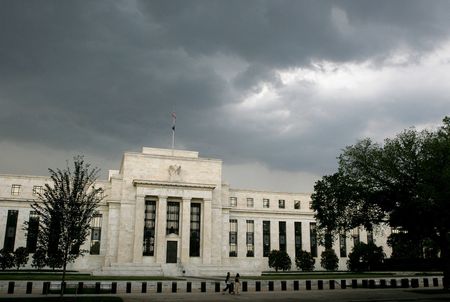By Ann Saphir and Howard Schneider
(Reuters) -Federal Reserve policymakers weighing when to start interest-rate cuts got fresh reasons on Friday to remain on standby, after a government report showed robust job growth in February but also signs of labor market cooling that could help the Fed’s battle with inflation.
U.S. employers added 275,000 jobs last month, a Labor Department report showed on Friday, handily beating the 200,000 that economists expected.
But the report’s revisions of prior months’ estimates showed smaller job gains in January and December than had earlier been thought, and other details of the report suggested a rebalancing in the labor market continues.
The U.S. unemployment rate rose to 3.9%, its highest in two years, though still below levels the Fed sees as sustainable in the long-run.
And wage growth has continued to edge down, rising 4.3% in February from a year earlier, down from 4.4% in January. Fed policymakers won’t see that growth as consistent yet with their 2% inflation goal, but it is moving in the right direction.
In testimony on Capitol Hill this week, Fed Chair Jerome Powell said he feels the economy is healthy and policymakers are “not far” from having enough confidence on inflation’s downward direction to start reducing interest rates.
Friday’s report showing the labor market is still strong but easing slowly “will provide reassurance to the Fed that real economic conditions remain broadly consistent with inflation converging durably towards 2%, and it will be appropriate to cut by June,” said Evercore ISI’s Krishna Guha.
Futures contracts that settle to the Fed policy rate now point to about an 80% chance the Fed will start cutting interest-rates by mid-June, with a little more than a one-in-four chance of a May 1 start.
Traders firmed up their expectations for a full percentage point of rate cuts by the end of the year, the equivalent of four quarter-point reductions over the remaining seven Fed policy-setting meetings this year.
INFLATION KEY
Fed policymakers next meet March 19-20, and are nearly universally expected to keep the policy rate in the current 5.25%-5.5% range, where it has been since last July. Powell said this week that range is likely to be the peak and is putting downward pressure on price pressures.
With inflation by the Fed’s targeted measure, at 2.4%, still above the Fed’s 2% goal, policymakers are looking for further assurance that it is headed durably downward before they decide to cut rates.
Instead, since the start of they year, some readings on inflation have been stronger than expected, prompting some Fed policymakers to say they may need to delay rate cuts a bit longer.
Fed Governor Christopher Waller, whose takes on monetary policy have proven prescient over the past couple of years, said in February that he wants a couple more months of data to verify progress on inflation, and that strong job gains underscore there is “no rush” to cut rates.
Meanwhile policymakers continue to look for any signals the labor market is cracking under the pressure of the highest U.S. policy rate in decades. Analysts said they won’t find much in Friday’s jobs report.
“It is clear that the pace of hiring is cooling, which was to have been expected,” wrote Regions Financial Corp Chief Economist Richard Moody. “There is, however, nothing in the data, including the higher jobless rate, that tells us the labor market is on the verge of rolling over.”
(Reporting by Ann Saphir; Editing by Chizu Nomiyama and Andrea Ricci)

